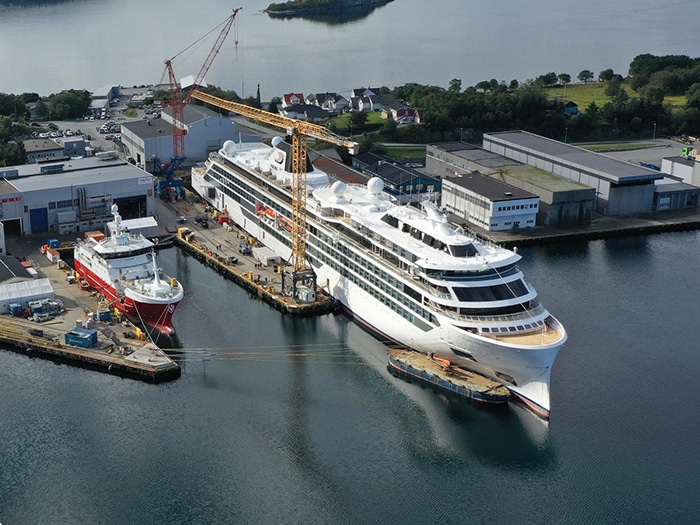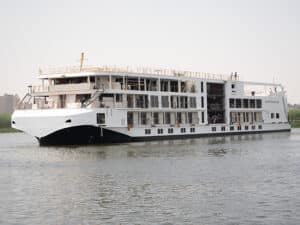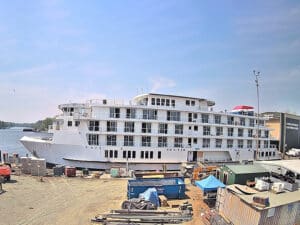
Viking takes delivery of second expedition ship
Written by Nick Blenkey
Viking Polaris was delivered from Vard's Søviknes shipyard in Norway.
Torstein Hagen’s Viking Cruises today took delivery of its second expedition ship, Viking Polaris, in a ceremony at Fincantieri subsidiary Vard’s Søviknes, Norway, shipyard, where Viking’s first expedition ship, the Viking Octantis, was delivered in December 2021.
Both vessels measure 205 meters in overall length with a molded beam of 23.5 meters and were outfitted at the Søviknes shipyard, with the hulls being built at Vard Tulcea in Romania, and .
Following the delivery ceremony, the Viking Polaris immediately set sail toward Amsterdam, where she will be named on September 30 by her ceremonial godmother, polar explorer Ann Bancroft. Currently sailing in the Great Lakes, the Viking Octantis will also be named on September 30 by her ceremonial godmother, Norwegian explorer, lecturer, author and educator Liv Arnesen.
From Amsterdam, the Viking Polaris will make her way to South America, and both ships will spend the southern hemisphere summer in Antarctica, before traveling north to the Great Lakes for a series of voyages during spring and summer.
With a vision that travel could be more destination focused,Torstein Hagen founded Viking in 1997 starting with European river cruises and entering the ocean cruise segment in 2015. Viking’s most recent river cruise expansion has been into the Mississippi River market, with the company starting operations with the Viking Mississippi earlier this year.
The expedition ships are for travelers seeking something perhaps more adventurous, but no less luxurious in terms of accommodations, dining options and the like.
POLAR CLASS 6
The new Polar Class Viking Octantis and Viking Polaris host 378 guests in 189 staterooms. With ice-strengthened Polar Class 6 hulls the vessels are purpose-built for expeditions, and feature both fin stabilizers and U-tank stabilizers that significantly decrease rolling when the ship is stationary.
Characteristics of the vessels are a straight bow, longer hull and state-of-the-art fin stabilizers that allows the ship to glide over the waves for the calmest possible journey. The ice-strengthened Polar Class 6 hull will provide the safest way to explore in polar regions, and the u-tank stabilizers will significantly decrease rolling when the ship is stationary.
As might be expected they feature an extensive array of amenities tailored to the needs of the expedition cruise market, including a state-of-the-art, industry-first in-ship marina providing ease of embarkation and disembarkation from Special Operations Boats and other equipment while sheltered from the elements.
Much more on all that the ships have to offer guests here.
The Viking expedition ships have an energy-efficient design that exceeds the Energy Efficiency Design Index (EEDI) requirements by nearly 38%. In addition to an integrated bow that creates a longer waterline for the ships, engines with heat recovery systems and Azipod electric propulsion, the Viking Octantis and the Viking Polaris have received one of the industry’s first SILENT-E notations.



